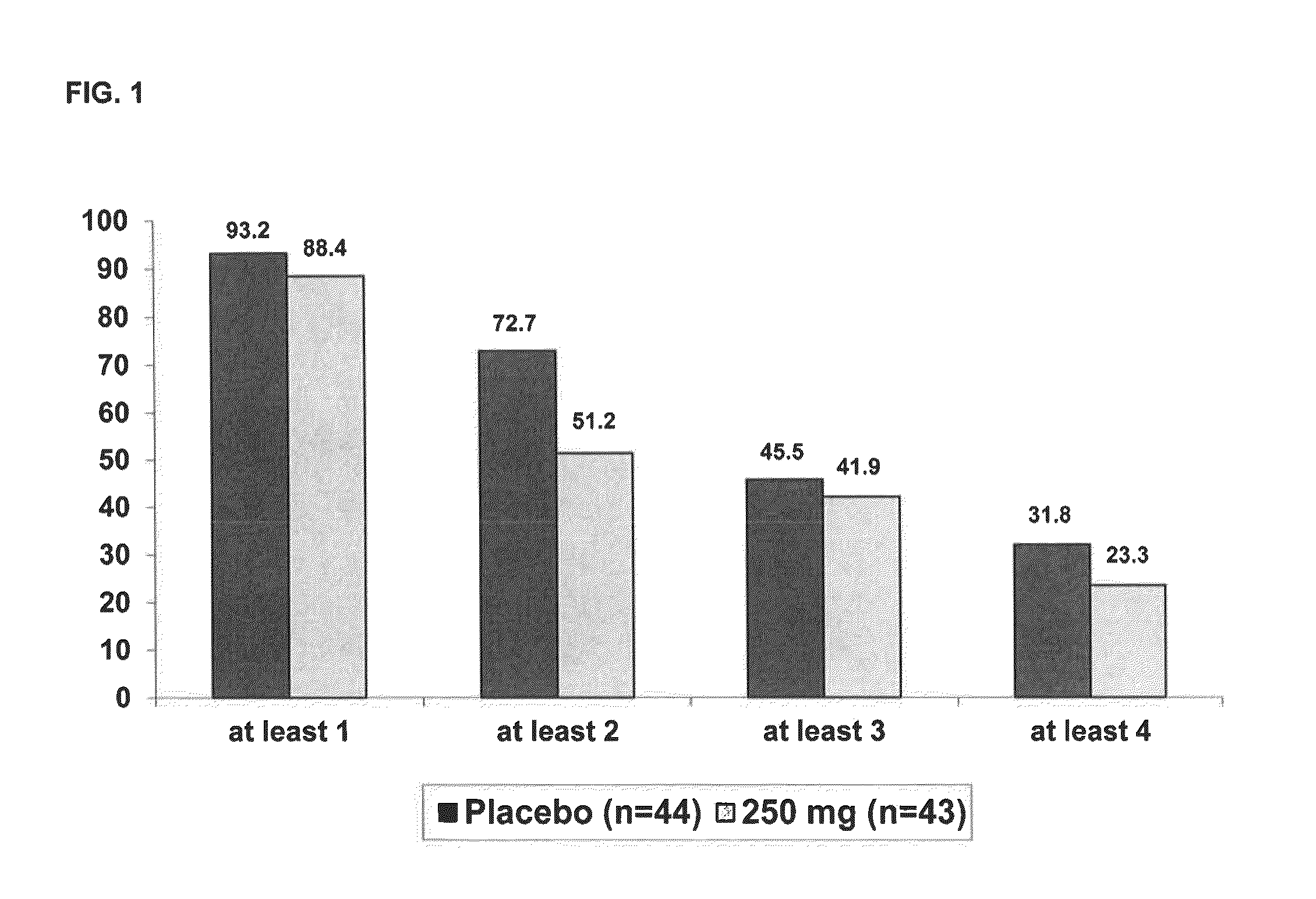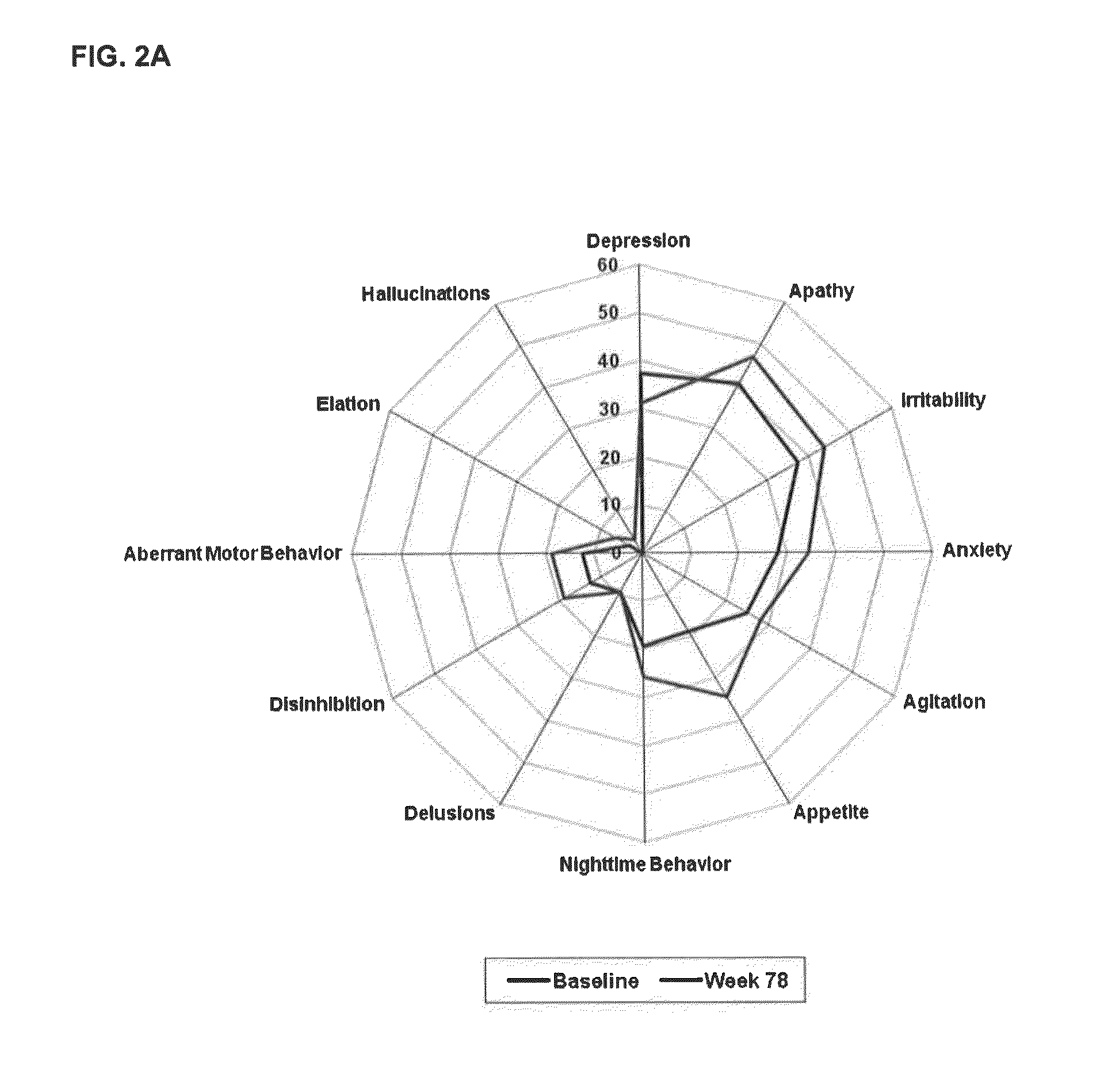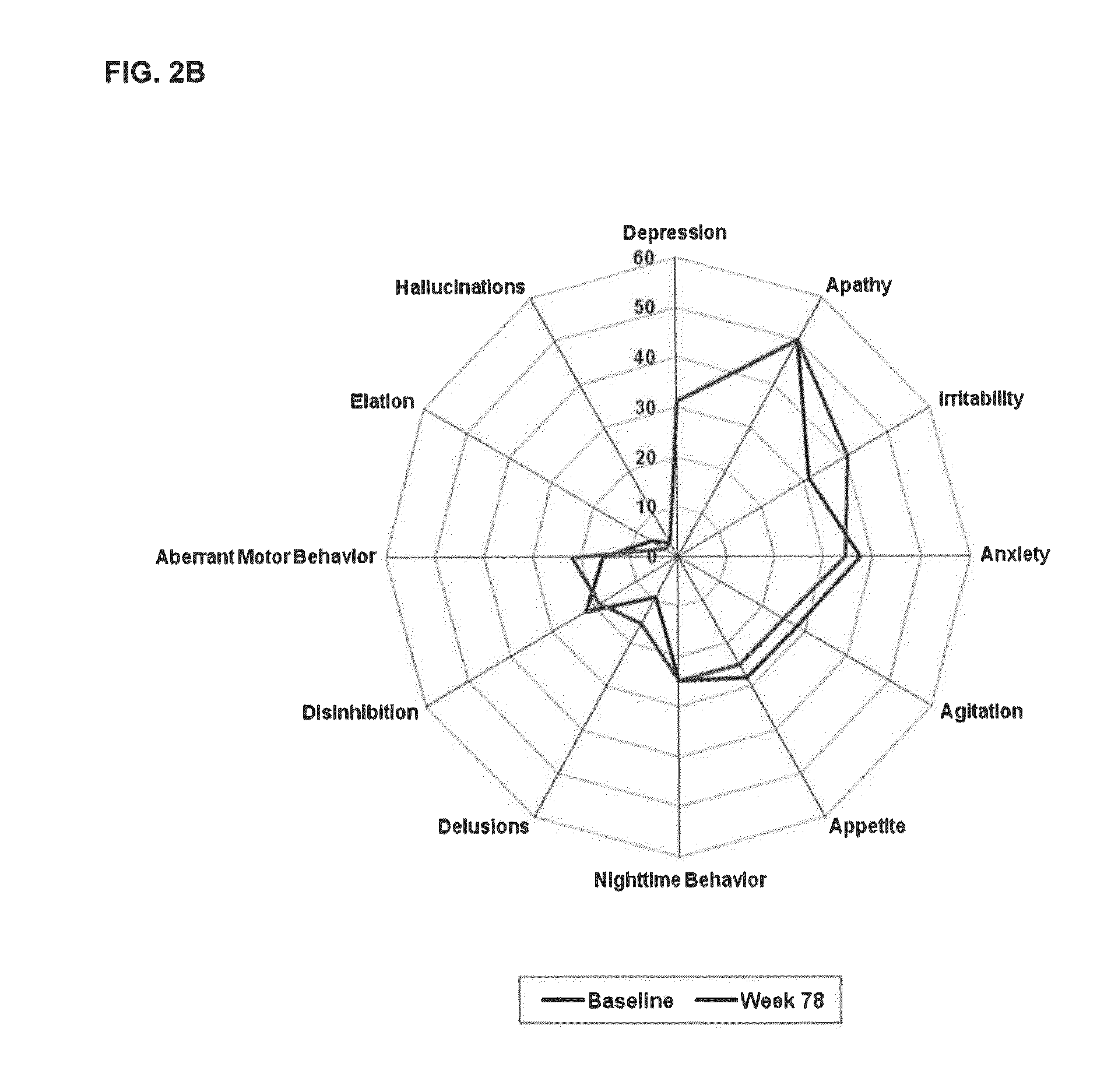Methods of treating behavioral and psychiatric disorders
- Summary
- Abstract
- Description
- Claims
- Application Information
AI Technical Summary
Benefits of technology
Problems solved by technology
Method used
Image
Examples
example
[0069]In a Phase 2, parallel arm, dose-ranging, placebo-controlled, double-blind, multicenter trial in patients with mild to moderate AD (MMSE 16-26), scyllo-inositol was administered to study subjects in immediate release tablets twice daily at the dosage level set for each study arm or identical-appearing placebo tablets were administered in the control arm. The study showed no statistically significant benefit in the overall Mild and Moderate population on the co-primary cognitive and functional endpoints the Neuropsychological Test Battery and Alzheimer's Disease Cooperative Study—Activities of Daily Living Scale (NTB and ADCS-ADL respectively); but there were encouraging trends in the pre-specified group of Mild AD patients. The study included neuropsychological assessments using the NPI-12 item scale, as well as assessments of scyllo-Inositol (SI) and myo-inositol (MI) brain levels using magnetic resonance spectroscopy (MRS).
[0070]Study drug was administered as placebo or one ...
PUM
| Property | Measurement | Unit |
|---|---|---|
| Fraction | aaaaa | aaaaa |
| Fraction | aaaaa | aaaaa |
| Time | aaaaa | aaaaa |
Abstract
Description
Claims
Application Information
 Login to View More
Login to View More - R&D
- Intellectual Property
- Life Sciences
- Materials
- Tech Scout
- Unparalleled Data Quality
- Higher Quality Content
- 60% Fewer Hallucinations
Browse by: Latest US Patents, China's latest patents, Technical Efficacy Thesaurus, Application Domain, Technology Topic, Popular Technical Reports.
© 2025 PatSnap. All rights reserved.Legal|Privacy policy|Modern Slavery Act Transparency Statement|Sitemap|About US| Contact US: help@patsnap.com



